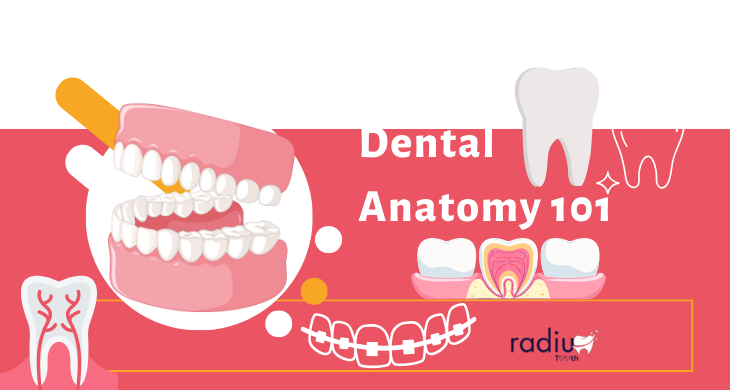The Exterior: Enamel and Dentin
At first glance, a tooth might appear to be a solid, unchanging structure, but its anatomy is surprisingly complex. The outermost layer is enamel, the hardest substance in the human body. This translucent covering protects the inner layers and acts as a barrier against the wear and tear of daily use. However, despite its incredible strength, enamel is susceptible to erosion from acids, which can lead to cavities.
Beneath the enamel is dentin, a yellowish tissue that forms the bulk of the tooth’s structure. Dentin is living tissue, unlike enamel, which has no living cells. It is porous, containing microscopic tubules that transmit sensations to the nerve housed in the pulp. Dentin’s sensitivity explains why you might feel discomfort when you consume something extremely hot, cold, sweet, or sour. The dentin is naturally protected by enamel, but if the enamel wears down, the dentin becomes more vulnerable to external stimuli.
The Core: Pulp and Nerves
Deep within the tooth lies the pulp chamber. This soft, living tissue houses the tooth’s nerve and blood vessels. The pulp plays a crucial role during tooth development, nourishing the tooth and providing sensory feedback. However, once a tooth has fully matured, it can survive without the pulp, as it can receive nourishment from surrounding tissues. The nerves in the pulp are responsible for registering pain and temperature.
When a tooth experiences decay, injury, or infection, the pulp can become inflamed, leading to severe pain. In such cases, a root canal procedure may be necessary to remove the pulp and alleviate discomfort while preserving the tooth’s structure.
Above and Below: Crowns and Roots
Teeth have two primary sections: the crown and the root. The crown is the visible part of the tooth above the gumline, and it serves multiple functions, including biting, chewing, and helping with speech. Crowns are covered in enamel, which is well-suited for the wear and tear associated with these functions.
Beneath the gumline, teeth extend into the jawbone, forming the roots. The roots anchor the tooth firmly in place and are crucial for its stability. They also contain the pulp chamber and the associated nerves and blood vessels.
Teeth vary in their crown and root shapes to accommodate their respective functions. Incisors have flat, chisel-like crowns for cutting, while molars have broad, flat crowns with multiple cusps for grinding and crushing food.
Tooth Development and Eruption
Understanding tooth anatomy also involves exploring tooth development and eruption. Humans have two sets of teeth in their lifetime: primary (baby) teeth and permanent (adult) teeth. Primary teeth begin to emerge at around six months of age and serve as placeholders for permanent teeth.
Tooth eruption is a carefully orchestrated process. As a permanent tooth develops and approaches eruption, it resorbs the roots of the primary tooth above it. The primary tooth becomes loose and eventually falls out, making way for the permanent tooth to take its place.
The timing of permanent tooth eruption can vary, but it typically starts around age six and continues into the late teens or early twenties. Wisdom teeth, or third molars, are the last to erupt and often require extraction due to limited space in the jaw.
The Importance of Oral Health
Understanding dental anatomy is more than a lesson in biology; it’s a fundamental component of maintaining good oral health. By comprehending the structure and function of your teeth, you can make informed choices about their care.
Regular dental check-ups, daily brushing and flossing, a balanced diet, and avoiding harmful habits like smoking are key elements of good oral health. These practices help prevent tooth decay, gum disease, and other oral health issues that can compromise the integrity of your teeth.
Oral Health and Overall Well-Being
Oral health is intricately linked to overall health. Poor oral hygiene can lead to systemic health issues such as heart disease, diabetes, and even pregnancy complications. By taking care of your teeth and gums, you’re not only preserving your smile but also contributing to your general well-being.
Conclusion
“Dental Anatomy 101: Exploring the Structure of Your Teeth” is an educational journey that highlights the remarkable complexity and significance of your teeth. Understanding their structure, from enamel to pulp, crowns to roots, provides you with the knowledge to make informed decisions about your oral health. By embracing good oral hygiene practices and regular dental check-ups, you ensure that your teeth remain strong, functional, and an essential part of your overall well-being. Dental anatomy is not just science; it’s the science behind your smile.

